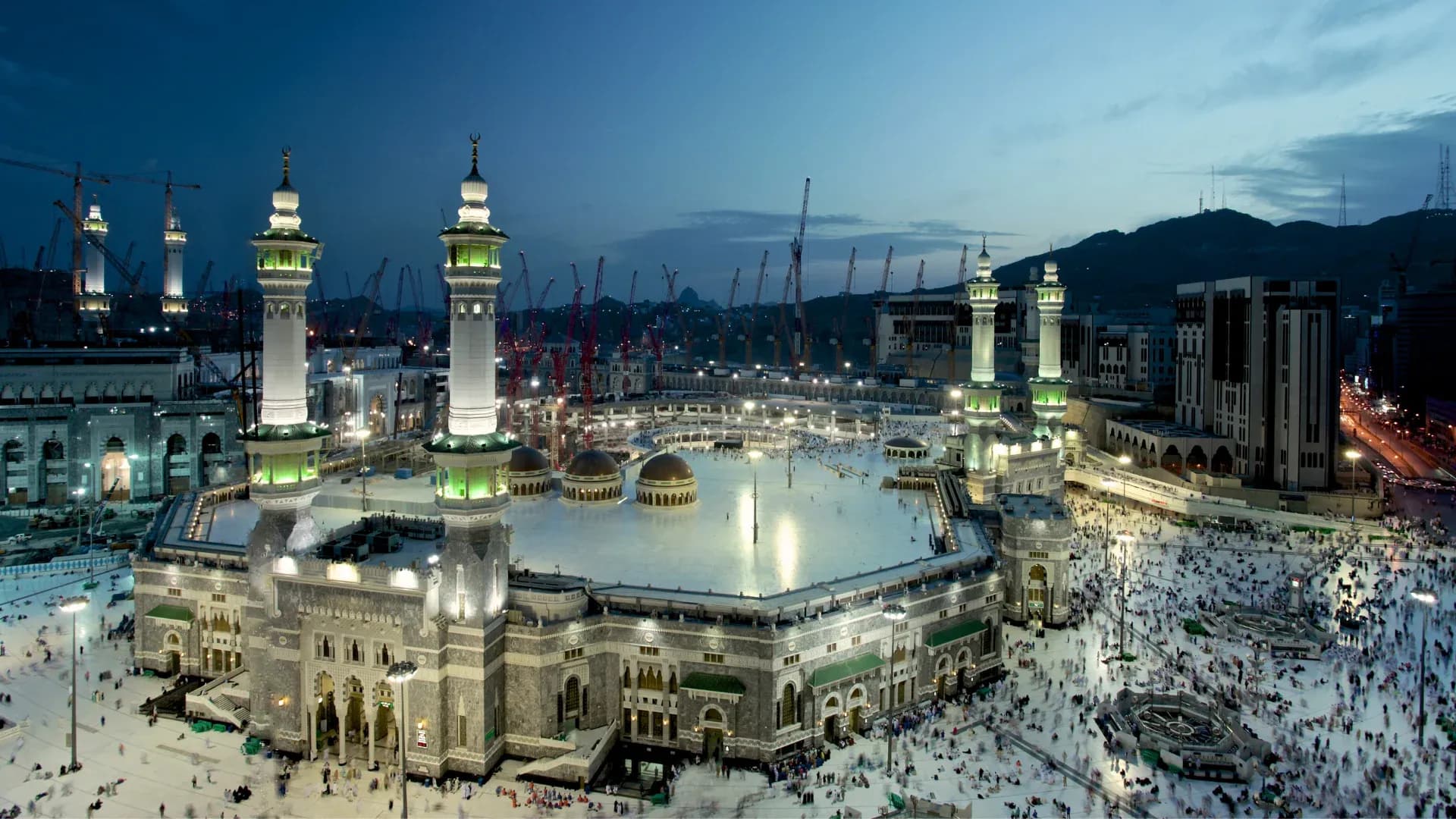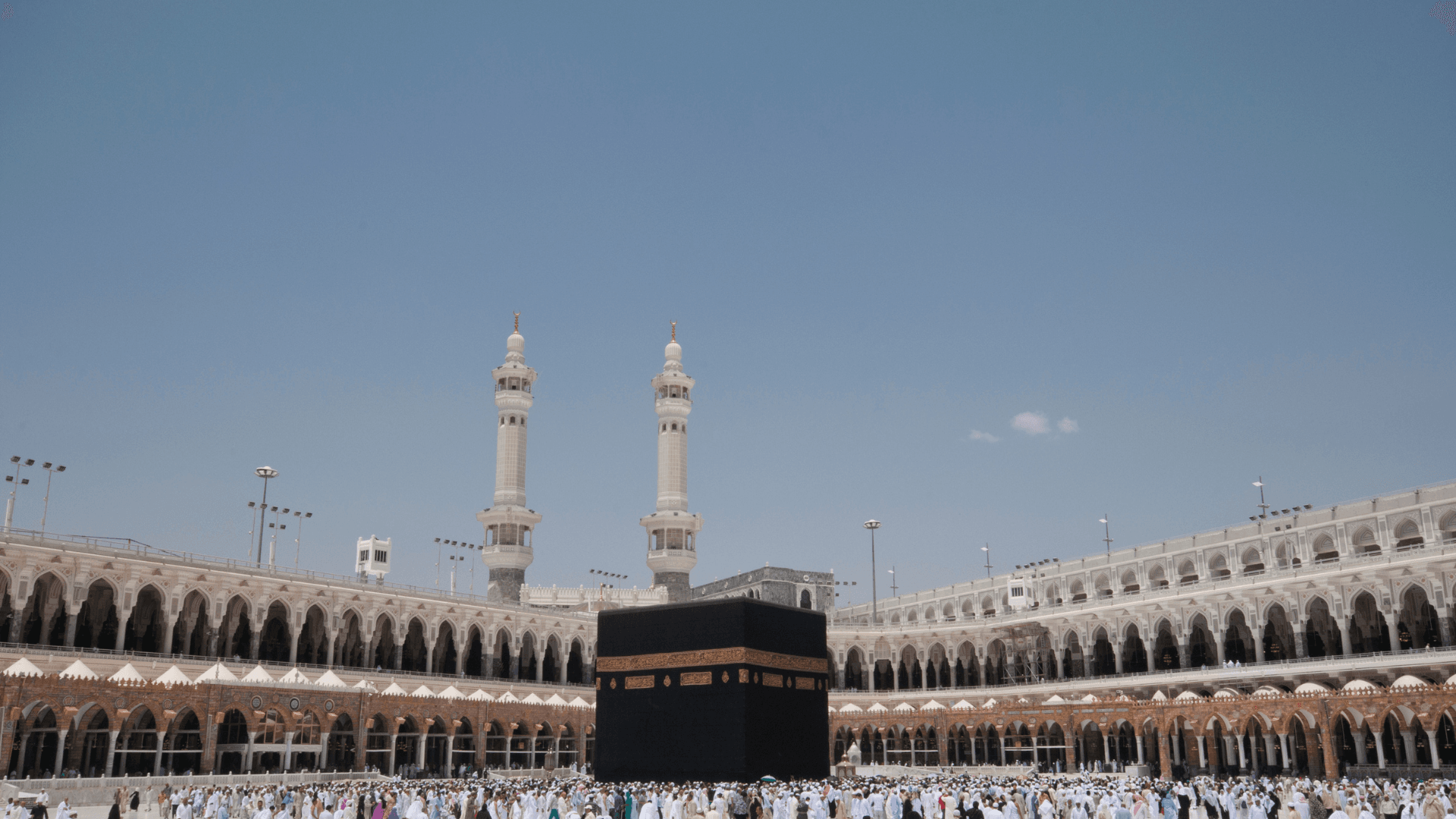
Al-Masjid al-Haram, located in Mecca, Saudi Arabia, holds unparalleled significance in Islam as the holiest site in the religion. Central to its importance is the Kaaba, a cuboid structure believed by Muslims to have been built by the Prophet Abraham and his son Ismael. Hosting millions of pilgrims annually for Hajj and Umrah, it emanates spiritual significance and historical prominence, making it an unparalleled sacred destination. The mosque serves as the focal point for the Hajj pilgrimage, an obligation for every able-bodied Muslim who can afford it, and for the Umrah pilgrimage, which can be performed at any time of the year. The circumambulation of the Kaaba within the mosque is a deeply symbolic act for Muslims, representing unity, submission to God, and spiritual renewal.
Moreover, Masjid al-Haram encompasses several other sacred sites within its vicinity, including the Black Stone, the Zamzam Well, and the hills of Safa and Marwa. These sites hold immense historical and religious significance, adding to the reverence of the mosque. As the largest mosque in the world and the most expensive building globally, Masjid al-Haram has undergone numerous renovations and expansions over the centuries to accommodate the ever-growing number of pilgrims and to provide facilities for worshippers. Its continuous development reflects the ongoing commitment to preserving its sanctity and ensuring its accessibility to Muslims from around the world, making it a symbol of unity, faith, and devotion in Islam.
Masjid al-Haram, the Sacred Mosque or the Great Mosque of Mecca, has a rich history deeply embedded in the foundations of Islam. According to Islamic tradition, the origins of the mosque can be traced back to the Prophet Ibrahim (Abraham) and his son Ismael. Guided by divine inspiration, they constructed the Kaaba, a cubic structure at the heart of the mosque, as a focal point for the Muslim community's prayers and a symbol of monotheism. This sacred sanctuary, encompassing the Kaaba, became the spiritual nucleus for Muslims worldwide, drawing millions annually to participate in the rites of Hajj and Umrah.
Throughout the centuries, Masjid al-Haram underwent various transformations, reflecting the evolving needs of the growing Muslim community. Renovations during the early Islamic era, especially under Caliph Abd al-Malik ibn Marwan and later the Ottoman Sultan Selim II, enhanced the mosque's structure and architectural elements. The Saudi era witnessed extensive renovations between 1955 and 1973, including the addition of minarets and the replacement of the floor, showcasing a commitment to maintaining and improving this sacred space.
Under the reigns of King Fahd, King Abdullah, and King Salman, the mosque experienced significant expansions, introducing new wings, outdoor prayer areas, and modern facilities. These efforts aimed to accommodate the increasing number of worshippers and enhance the overall experience for pilgrims undertaking the sacred journeys of Hajj and Umrah. Despite facing challenges such as the 1979 siege and the 2015 crane collapse, Masjid al-Haram endures as a symbol of unity and devotion, standing as the holiest site in Islam and a testament to the faith's enduring spiritual significance.
Significance: Al-Masjid al-Haram, commonly known as the Grand Mosque, holds immense significance in Islam as it houses the Kaaba, the most sacred structure in the religion. Muslims worldwide face towards the Kaaba during their prayers, symbolizing unity and devotion.
Expansion: Continuous expansion projects have transformed Al-Masjid al-Haram into one of the largest mosques globally, accommodating millions of worshippers, especially during the annual Hajj pilgrimage.
Grand Mosque: Referred to as the Grand Mosque, it attracts millions of pilgrims annually, particularly during the Hajj pilgrimage, one of the Five Pillars of Islam.
Architectural Marvel: Featuring stunning Islamic architecture, the mosque is adorned with intricate designs and patterns. The iconic Abraj Al Bait Towers overlook the mosque, adding to its majestic skyline.
Tawaf: Pilgrims perform Tawaf, the act of circumambulating the Kaaba, during Hajj and Umrah, symbolizing the spiritual journey and devotion to God.
Black Stone: Housed within the Kaaba, the Black Stone is a sacred object believed to date back to the time of Prophet Ibrahim. It is kissed or touched by pilgrims during the Tawaf ritual.
Abraj Al Bait: The complex surrounding the mosque includes the Abraj Al Bait Towers, which house luxury hotels, shopping malls, and the Makkah Royal Clock Tower, adding modern amenities to the area.
Hateem: The semi-circular area adjacent to the Kaaba, known as the Hateem, is considered an integral part of the Kaaba and holds significant religious importance.
Historical Significance: Al-Masjid al-Haram has historical significance dating back to pre-Islamic times, and it has undergone numerous renovations and expansions throughout history to maintain its sanctity and accommodate worshippers.
Geographic Information: Located in Mecca, Makkah Province, Saudi Arabia, Al-Masjid al-Haram is situated in a hot desert climate, with temperatures often exceeding 40°C (104°F) during summer.
Al-Masjid al-Haram in Mecca beckons millions of visitors from all corners of the globe, drawing them with its profound spiritual significance and awe-inspiring architecture. At the heart of this revered site lies the Kaaba, the holiest sanctuary in Islam, towards which Muslims around the world turn during their prayers. The opportunity to stand before the Kaaba, to circumambulate it during the Tawaf ritual, and to offer supplications in its vicinity is a deeply spiritual experience that embodies the essence of Muslim faith and devotion. For believers, a pilgrimage to Al-Masjid al-Haram represents a sacred journey, a fulfillment of religious obligation, and a chance to seek closeness to the Divine.

Beyond its religious significance, Al-Masjid al-Haram holds a unique allure as a symbol of unity and solidarity among Muslims worldwide. It serves as a melting pot of cultures, languages, and traditions, where pilgrims from diverse backgrounds converge in a shared expression of faith. The atmosphere within the mosque is infused with a palpable sense of reverence, serenity, and collective devotion, fostering a profound sense of belonging and interconnectedness among worshippers. Whether it's the grandeur of its architecture, the sanctity of its rituals, or the sense of spiritual elevation it inspires, a visit to Al-Masjid al-Haram is a transformative experience that leaves an indelible mark on the hearts and souls of those who journey to this sacred site.
Getting to Al-Masjid al-Haram in Mecca, Saudi Arabia, involves several steps, especially for those traveling from outside the city or country:
Travel to Mecca: If you're coming from outside Mecca, you'll need to arrange transportation to the city. This typically involves flying into King Abdulaziz International Airport (JED) in Jeddah, which is the nearest major airport to Mecca. From there, you can take a taxi, bus, or private car to reach Mecca.
Entry Permit: Before traveling to Mecca, especially for pilgrimage purposes, ensure you have the necessary entry permits. For Hajj or Umrah pilgrimages, you'll need to obtain the appropriate visas and permits issued by the Saudi government. Make sure to check the latest requirements and regulations before planning your trip.
Transportation within Mecca: Upon reaching Mecca, you can use various modes of transportation to reach Al-Masjid al-Haram. Taxis, buses, and private cars are common options. During peak pilgrimage seasons, special transportation arrangements may be in place to facilitate travel to the mosque.
Walking Distance: Depending on your accommodation's proximity to Al-Masjid al-Haram, you might be able to reach the mosque on foot. Many hotels and accommodations in the vicinity offer easy access to the mosque, allowing pilgrims to walk to the site conveniently.
Navigating to the Mosque: Al-Masjid al-Haram is a prominent landmark in Mecca, and directions to the mosque are relatively straightforward. Signs and landmarks guide visitors toward the mosque's entrances, with clear pathways leading to the main courtyard and the Kaaba.
Respect Local Customs: While traveling to Al-Masjid al-Haram, it's essential to respect local customs and religious sensitivities. Dress modestly, particularly when entering the mosque premises, and adhere to any specific guidelines or instructions provided by authorities.
Plan Ahead: Due to the high volume of visitors, especially during peak pilgrimage seasons, it's advisable to plan your visit to Al-Masjid al-Haram carefully. Consider factors such as crowd levels, prayer times, and any ongoing construction or renovation work that might affect access to certain areas of the mosque.
By following these steps and making necessary preparations, travelers can ensure a smooth and meaningful journey to Al-Masjid al-Haram, one of the most revered religious sites in Islam.
At Saudi Arabia ABC, we aim to take you on a transformative journey through the magic of immersive experiences. Whether you are an adventurous traveller or a curious local seeking hidden gems, our platform offers a rich tapestry of content designed to cap